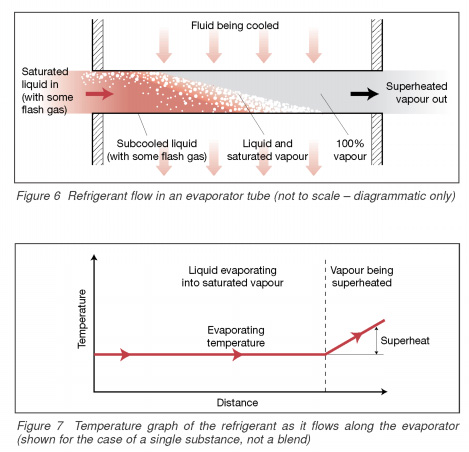Evaporating process
Refrigerant liquid passes through the expansion unit, pressure drop and temperature, and then enters the evaporator where it absorbs heat from the 'hot' pipes and thus begins to evaporate (boil). This creates a cooling effect as the heat absorbed from the pipe, in turn, is absorbed from the air or fluid flowing around the evaporator tubes, thus cooling it. Some of the refrigerant may, during the expansion, evaporate instantly - this is called flash gas, and often occur in the pipes between the expansion device and the evaporator and therefore cannot provide any useful cooling.
Once in the evaporator, the refrigerant boils off gradually along the evaporator at a temperature of boiling, converted from a liquid to a saturated steam at the same temperature. Only when the evaporation process is finished and the refrigerant in that part of the evaporator 100% vapour, makes it a further increase in temperature.
It further heating above the saturated evaporating temperature is called overheating. Some overheating, as a reserve, it is necessary to direct expansion (DX) systems to ensure that no liquid refrigerant may return to the compressor.
However, overheating is not a very efficient use of the evaporator is much more heat is absorbed in the process of cooking (latent heat)than is absorbed vapor temperature change (sensible heat). A reasonable balance must be found overheating, as a rule, must set about 5C above boiling point. Evaporating process is shown in Figure 6. Fig. 7 shows how to change the temperature of the refrigerant.
 .. ..
|

 ..
..